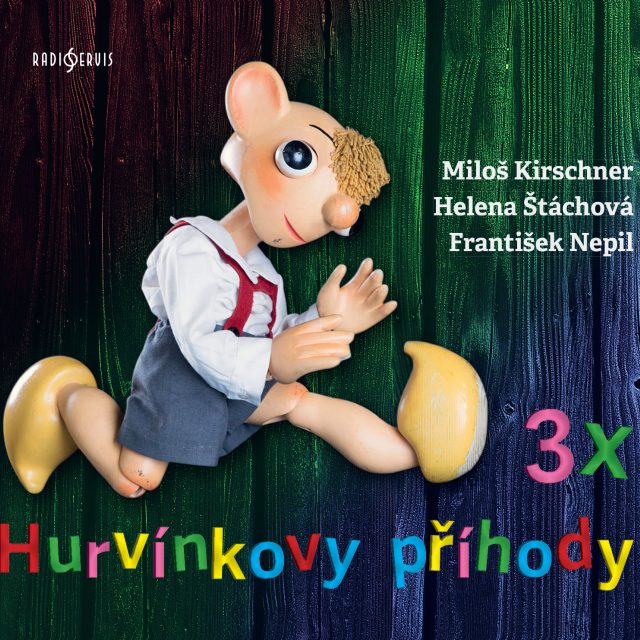Josef Suk
* 4 January 1874 Křečovice† 29 May 1935 Benešov u Prahy
“That is music from heaven,” wrote Antonín Dvořák of Suk’s music for Zeyer’s fairytale for stage Radúz and Mahulena, op 13 (1897-1898). When Suk thought back on this work years later, he said, “Spring in the soul, spring in music. I can say that it was in the music for Radúz and Mahulena that I found myself, and that work had an effect on my composition for a great many years.” The suite created from it called Pohádka (Fairytale) op. 16 (1899–1900) figures among the golden treasures of Czech music. Before that work, Suk had already composed his Serenáda Es-dur, op. 6 (1892) for string orchestra, a work with which Johannes Brahms was so taken that he warmly recommended its publication to Simrock, his Berlin publisher. For the 100th anniversary of Suk’s birth, Emil Hlobil, professor of composition at Prague’s Academy of Performing Arts, wrote of the Serenade: “There are not many examples of an eighteen-year-old composer having produced such a mature and perfect sample of his genius as is Suk’s Serenade. [...] Today we know that it was already a new word in Czech music. And that was not anything easy at that time – after Dvořák!”
But even that Serenade was not the first of Suk’s works deserving attention. As an eleven-year-old boy, Suk had been admitted to the Prague Conservatory, at first to study violin with Antonín Bennewitz and then three years later concurrently also to study composition. He had been prepared for study at the conservatory by his father, the “kantor” of a village school and choirmaster of the local church in Křečovice u Sedlčan. Beginning in January 1891 Antonín Dvořák was engaged at the Prague Conservatory as professor of composition. And the first piece that Suk wrote for his class (it was the third-year composition class) was a piano quartet. When Dvořák wrote his evaluation of that work as well as of a preceding piano trio when Suk applied for support from the Czech Academy of Sciences, Literature and Art, he stated that “...those works could be written only by a determined and genuine musical talent.” The quartet, to which Suk then assigned opus number 1, was his first composition to appear in print (1892). Of Suk’s String Quartet No. 1 in B flat, op. 11, famous critic and later Harvard professor Hugo Leichtentritt wrote that he knew “only very few string quartets after Brahms that grasp the style of that art form with such certainty as does the work of the superb second violinist of the Bohemian String Quartet.”
In 1892 there occurred an event that was to affect the rest of Suk’s life: the Bohemian String Quartet was founded, and Josef Suk was its second violinist. The quartet soon achieved recognition and fame both at home and abroad. This also meant, however, that for most of the year it was making concert tours all around Europe. And Suk could then for the most part compose only after the concert season had ended, during the summer in his family home in Křečovice.
On 1 May 1904 Suk’s erstwhile teacher and then father-in-law, Antonín Dvořák, suddenly died. One year later, however, Suk’s wife and Dvořák’s daughter, Otilka, also died. Deeply shaken, Suk composed his massive symphony Asrael, op. 27 (1906), named after the angel of death in Eastern religions, from which that tradition then also passed into the European cultural milieu. The symphony is dedicated “to the noble memory of Dvořák and Otilka.” It forms as it were the first work in a tetralogy inspired by Suk’s life: Pohádka léta (A Summer´s Tale), Zrání (Ripening – a title taken from an Antonín Sova poem, “Reflexions on Life”) and Epilog. Composer Vítězslav Novák wrote of the symphony Asrael: “This work of all of Suk’s oeuvre moves me most deeply, both in its humanity by its unmediated warmth of feeling as well as in its art by its creative effort. With Asrael he created the type of the modern Czech symphony. In it Suk surpassed everything in the way of symphonies that Czechs had written up until that time, and he reached the high point of his symphonic works.” And about Zrání Novák writes in his memoirs: “This is a work of happy inspiration, of creative tension, of captivating color.”
His symphonic poem Praga, op. 26 (1904) -- “an expression of love for the city he cherished” – is often performed. Noteworthy too are the works Suk composed for his own instrument, the violin: Čtyři skladby (Four Works) for violin and piano, op. 17 (1900) and Fantazie g-moll (Fantasy in G minor) for violin and orchestra, op. 24 (1902–1903). Another of Suk’s finest compositions is his String Quartet No. 2, op. 31 (1910-1911), representing the composer’s movement toward a more complicated, contemporary mode of expression. His piano works display a wide range of styles, from the youthful but already clearly “Sukian” Písně lásky (Songs of Love, 1893) and the cycle titled Jaro (Spring), op. 22a (1902) to the cycle titled Životem a snem (Things Lived and Dreamed), op. 30 (1909) and the work named O přátelství (About Friendship), op.36 (1920). From his memories of the deceased Otilka, right after the Asrael Symphony, came the piano cycle O matince (About Mother), op 28. At the beginning of World War I, Suk wrote Meditace na staročeský chorál sv. Václave (Meditation on the Saint Wenceslas Chorale) for string quartet or string orchestra, op. 35a (1914), which the Bohemian String Quartet performed as a counterbalance to the obligatory Austrian national anthem. The symphonic piece Legenda o mrtvých vítězích (Legend of Dead Victors), op. 35b (1919–1920) was dedicated to the memory of fallen Legionnaires. The most famous Czech symphonic march is Suk’s V nový život (Towards a New Life), op. 35c (1920), dedicated to the Sokol movement.
His Deset zpěvů na slova lidových písní slovanských (Ten Songs on the Texts of Slavic Folk Songs) for women’s chorus with four-hand piano accompaniment, op. 15 (1899) were written in a style similar to that of the music of Radúz and Mahulena; folk songs also provide the texts for the men’s choruses of op. 18 and 32, which include the popular chorus Bán Varaždinský a král Matyáš (Bán Varaždinský and King Matyáš).
Works intended for young musicians are the bagatelle for violin, flute and piano titled S kyticí v ruce (With a Posy in One’s Hand, 1917) and Sousedská (a kind of slow Czech dance, 1935), this latter the last work Suk was to complete.
From 1922 until the end of his life, Suk was professor of composition of the Masters School of the Prague Conservatory, having among his students Bohuslav Martinů, Jaroslav Ježek, Pavel Bořkovec, František Pícha, Klement Slavický and others. Josef Suk ranks among the greatest Czech composers and the greatest masters of orchestral composition.
Author: Zdeněk Nouza
E-shop Českého rozhlasu
Hurvínek? A od Nepila? Teda taťuldo, to zírám...
Jan Kovařík, moderátor Českého rozhlasu Dvojka


3 x Hurvínkovy příhody
„Raději malé uměníčko dobře, nežli velké špatně.“ Josef Skupa, zakladatel Divadla Spejbla a Hurvínka




